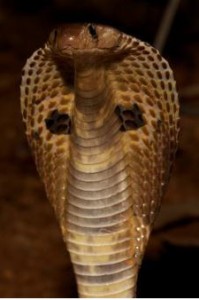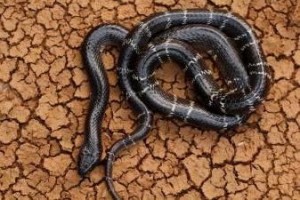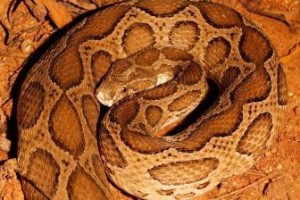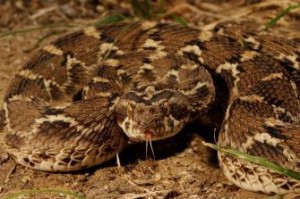Snakes
Snakes in Whitefield
The city of Bangalore is continuing to spread its tentacles beyond what is considered “city limits”. Encounters with wildlife are inevitable as we encroach upon their habitat to build our own spaces. Residents of developing areas such as Whitefield tend to come into contact with wildlife more often than residents in the heart of the city. Sustainable conflict mitigation calls for knowledge and means to co-exist with wildlife within a given micro ecosystem, like Whitefield, such that no harm is caused to either humans or animals.
Chance encounters with wildlife in Whitefield are generally restricted to the following species:
- Birds such as black kite, crow, barbet, different species of owls etc.
- Mammals such as bonnet macaque and squirrels.
- Reptiles such as snakes and terrapins.
In all conflict situations involving the above said species, basic understanding of the animal behaviour and presence of mind is all that it takes to resolve the fracas and co-habitate.
Of the above species, snakes have the highest frequency of conflict with humans resulting in relocation of the snake to another alien ecosystem which more often than not will result in its death. Resolution of conflict with snakes begins with understanding the species.
Snakes of Whitefield
Rapid development in areas like Whitefield leads to increased conflict with snakes. Snakes were never and will never be restricted to just the rural and wild areas of any locale. They are very commonly found in urban habitation which calls for a basic understanding of the species and to be appreciative of the role they play in metropolitan ecosystems such as Whitefield.
- Over 280 species of snakes found in India out of which less than 50 are venomous. Of these only 4 venomous species can be commonly found in Whitefield.
- Snakes do NOT drink milk.
- Snakes do NOT store a jewel in their head.
Snakes and people:
- Majority of encounters between humans and snakes is purely accidental.
- Use of snakes in entertainment has led to an epidemic of myths regarding the species.
- They have long been depicted in religion as both good and bad- the bad part of which has led to disbeliefs resulting in killing of snakes.
Snake rescue and relocation:
- Rescue and relocation of snakes from one area to another is wrongly seen as conservation efforts.
- Relocated snakes have a very slim chance of survival.
- Relocation causes imbalance in the ecosystem in the area of rescue as well as area of release.
Lacuna in snake conservation:
- Lack of understanding on ways to co-exist with snakes within the same locality.
- Snakes, though worshipped, are not seen for their true value in nature.
- They are often not afforded the functional protection that the law intends to provide.
- Wrongful representation of snakes in legends and movies are the corner stones of what the general public “know” about them.
Benefits of having snakes in an area:
- They keep the rodent population in check. Especially in developing areas.
- Venom of snakes is used to produce anti-venom for treatment of snake bites.
- Venom has also been used in variety of drugs which are used to treat other human diseases.
- They play an important role in the food chain and hence keep the ecosystem in check.
Steps to be taken when you spot a snake:
- Do not panic.
- Children should be taught to call an adult.
- Never attempt to handle the snake.
- Keep a safe distance of about 7 to 10 feet from the snake.
- Do not block the snake’s path. Give the snake a chance to leave the area.
- If the snake is more than 10 feet away in an outdoor area, thump your feet.
Keeping snakes out of your home:
- Avoid having thickets, leaf litter in your garden.
- Cut down heavy bush and trim back hedges.
- Avoid unwanted accumulation of debris such as piles of wood, stone and other unused household supplies on the property.
- Shoes kept outside the house to be kept in a shoe rack/bag.
- Seal small gaps under doors and windows.
- Rodent and insect population to be kept under check by responsible waste management practices.
Do’s and Don’ts of a snake bite:
Do’s:
- Reassure the victim.
- Remove any constraining items such as watch, ring, bracelet, anklet etc.
- Immobilize the bitten body part.
- Transfer the victim to the nearest hospital.
- Take note of symptoms.
- If possible, note the size, colour and pattern of the snake and report it to the doctor.
Dont’s:
- Tie a tourniquet or ligature.
- Give aspirin or any pain killer.
- Consume alcohol or stimulating drinks.
- Cut the wound or try to suck the venom out.
- Wash the wound.
Anti Venom available at Columbia Asia hospital 080 6165 6666
Snake help
Girish 9845080903
Mohan 9845287861
Krishna 9880041131 or Spoorthy 7406079036
Kumar 9901600332 (Marathahalli)
Nagabhushan Hosakote +91 93-41-240482
Anees 080-5487424/ 98440-37424 http://www.islamawareness.net/Children/news1.html




